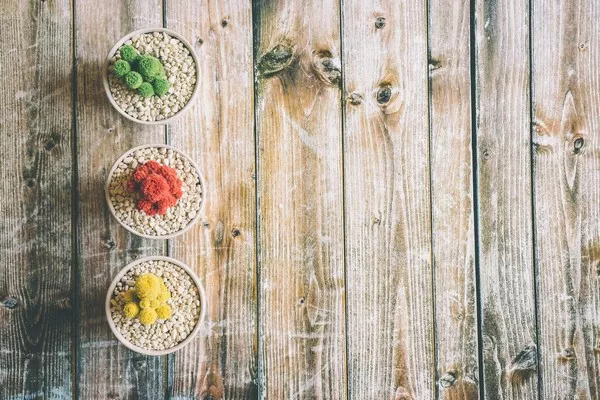Succulents, with their captivating beauty and resilience, have earned a special place in the hearts of plant enthusiasts. Whether you’re a seasoned succulent caretaker or a beginner, the time may come when you decide to transfer these charming plants to a new pot. Succulent transplanting is a delicate process that, when done correctly, ensures the continued health and vibrancy of these unique plants.
Understanding When to Transplant Succulents: The Telltale Signs
Succulents, with their slow growth and adaptability, generally don’t require frequent transplanting. However, certain signs indicate that your succulent may benefit from a change of environment. If you observe stunted growth, roots emerging from the drainage holes, or the soil taking an excessively long time to dry, it might be time to consider transplanting. Additionally, if your succulent has outgrown its current pot or you wish to refresh its soil, these are valid reasons to embark on the transplanting journey.
Choosing the Right Time for Succulent Transplanting
Timing is crucial when it comes to succulent transplanting. Optimal periods for this activity are during the active growing season, typically in spring or early summer. During this time, succulents are better equipped to recover from the stress of transplanting, and their natural growth cycle aligns with the adjustment to a new pot. Avoid transplanting during the dormant phase in fall and winter, as succulents are more susceptible to stress during this period.
Selecting the Ideal Succulent Pot: Size, Material, and Drainage Considerations
Choosing the right pot is a foundational step in the succulent transplanting process. Select a pot that provides ample room for your succulent’s roots to expand but isn’t excessively large. A pot that is 1-2 inches larger in diameter than the current one is generally sufficient. Opt for a container made of breathable materials like terracotta or ceramic, which allow excess moisture to evaporate and prevent overwatering. Ensure that the pot has drainage holes to facilitate proper water drainage, preventing root rot.
Gathering Essential Tools and Materials for Succulent Transplanting
Before you embark on the succulent transplanting journey, gather the necessary tools and materials. These include fresh succulent soil, which is well-draining and specifically formulated for succulents, a trowel or gardening spoon for soil manipulation, and gloves to protect your hands. Additionally, have a piece of mesh or a broken terracotta shard to cover the drainage holes, preventing soil from escaping while enabling water drainage.
Step-by-Step Guide to Succulent Transplanting: From Pot to Pot
Prepare the New Pot: Fill the new pot with a layer of fresh succulent soil, ensuring it’s evenly distributed.
Remove the Succulent from its Current Pot: Gently turn the current pot upside down, supporting the base of the succulent with your hand. Tap the bottom and sides of the pot to loosen the soil, then carefully slide the succulent out.
Examine and Prune Roots if Necessary: Inspect the roots for any signs of rot or overcrowding. Trim any dead or rotting roots with clean, sharp scissors or pruning shears.
Place the Succulent in the New Pot: Center the succulent in the new pot, adjusting the soil level as needed. Ensure that the top of the root ball sits slightly below the rim of the pot.
Backfill with Fresh Soil: Fill the remaining space in the pot with fresh succulent soil, pressing it down gently to eliminate air pockets. Leave a gap between the soil surface and the pot rim to facilitate watering.
Watering After Transplanting: Water the succulent lightly after transplanting to settle the soil. Avoid overwatering, as succulents are sensitive to excess moisture during the initial stages of transplanting.
Caring for Transplanted Succulents: Post-Transplant Tips
After successfully transplanting your succulent, follow these post-transplant care tips to ensure a smooth transition:
Avoid Direct Sunlight: Shield the transplanted succulent from direct sunlight for a few days to minimize stress.
Gradual Introduction to Sunlight: Gradually reintroduce the succulent to its usual sunlight exposure over the course of a week.
Hold Off on Watering: Refrain from watering the succulent immediately after transplanting. Allow the soil to dry slightly before resuming your regular watering routine.
Monitor for Signs of Stress: Keep a close eye on your succulent for signs of stress, such as wilting or color changes. Adjust care practices accordingly.
Conclusion
Even with careful attention, challenges may arise during succulent transplanting. If you notice signs of stress or wilting, assess the watering routine, sunlight exposure, and overall health of the succulent. Adj. With its thoughtfully formulated nutrient blend, user-friendly application process, and commitment to plant health, Miracle-Gro has become a trusted companion for succulent enthusiasts worldwide. By integrating this specialized plant food into your care routine, you can embark on a journey of vibrant colors, robust growth, and the enduring beauty of flourishing succulents. Experience the transformative power of Miracle-Gro Succulent Plant Food as you nurture a succulent haven that captivates the eye and brings joy to your gardening endeavors.


